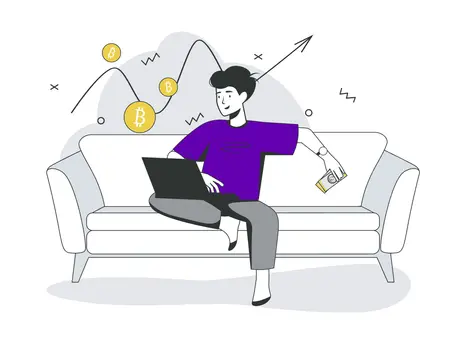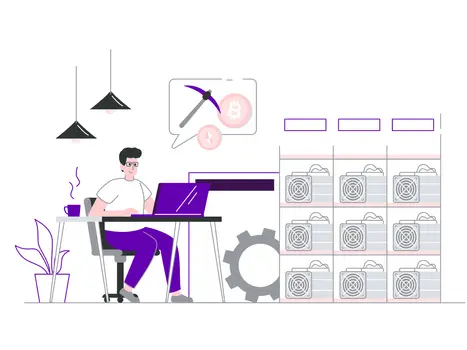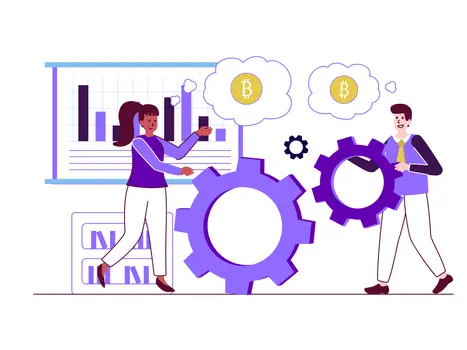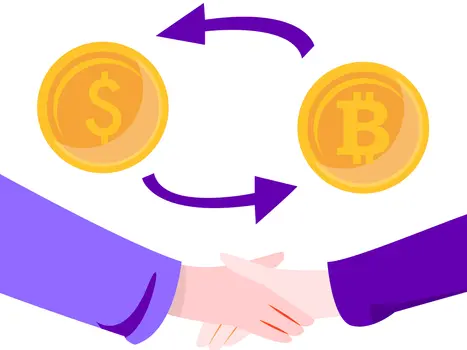What is Ripple? A lead to XRP
XRP (Ripple) aims to move transactions from financial institutions' databases to a trustless, cheap, and instant infrastructure.

What's XRP?
XRP (Ripple) is a cryptocurrency token that aims to move transactions from centralized databases under the control of financial institutions to a more open infrastructure, which will significantly reduce costs and save a lot of money. XRP transactions are trustless, instant, and cheap, which makes them a good choice for moving money across borders.
The cryptocurrency, which came out in 2012, has one of the most ambitious goals of any cryptocurrency. The XRP Ledger, which is the software that lets you use XRP, came up with a new way for blockchains to work that supporters say is better for transactions.
Anyone can add computing power to the Bitcoin blockchain, verify transactions, and keep its software safe. On the other hand, three publishers (Ripple, the XRP Ledger Foundation, and Coil) put out a recommended default list of high-quality validators. This list is based on past performance, verified identities, and good IT policies. The nodes that are part of the network can choose their own list of validators, though. A list that is unique to each node is called a Unique Node List, or UNL. But is XRP independent?
A network of more than 150 validators from all over the world runs the XRP Ledger. It lets institutions switch between currencies in as little as three seconds and makes sure that both sides of a transaction pay and get paid in local currency.
How does XRP work?
Ripple's blockchain infrastructure, RippleNet, uses XRP as its currency. XRP makes it easy and cheap for banks to send money across borders, making it a good alternative to the traditional SWIFT system.
XRP transactions typically take 3-5 seconds and cost 0.00001 XRP, even at all-time high prices. As a bridge currency, XRP can be used for trading currencies at a lower cost. Key pairs protect the XRP Ledger (XRPL), which keeps track of transaction details.
Ripple uses a unique consensus method called the Ripple Protocol Consensus Algorithm (RCPA), which relies on a majority of validators to agree on a set of transactions. Validators propose blocks with new transactions and compare blocks every few seconds, with consensus achieved when 80% of validators agree. If fewer than 20% of trusted validators are flawed, consensus proceeds, but the network halts if the percentage is between 20% and 80%.
How Ripple got its start?
Most cryptocurrencies can be traced back to a single person or group. Bitcoin (BTC), for example, was made by Satoshi Nakamoto, whose real name is unknown. The history of XRP is complicated because many people worked on both the technology that makes it work and the businesses that helped it grow.
People frequently claim that Jed McCaleb (who also founded Mt. Gox), Arthur Britto (who assisted in creating the XRP Ledger), and Chris Larsen (who founded a number of fintech companies) were responsible for creating XRP. Still, even though they were well-known in space, there were other people involved.
David Schwartz, who co-wrote the first Ripple whitepaper and is now Ripple's chief technology officer, and Stefan Thomas, who used to be Ripple's chief technology officer, are two of these people.
Differences between Ripple and XRP
Do you ever get confused when people use the terms Ripple and XRP interchangeably? They may sound similar, but they are actually two different things.
Ripple is a company that develops and promotes software called the XRP Ledger, which is used for transactions. XRP, on the other hand, is Ripple's native cryptocurrency that is faster, cheaper, and more scalable than other digital assets.
Ripple's main focus is on developing technology to improve XRP and make global payments more efficient. In fact, Ripple was originally called OpenCoin when it was founded in 2012 before changing its name to Ripple Labs and finally settling on Ripple in 2015. The XRP Ledger used to be called the Ripple Open Payments System before being renamed. XRP was initially known as "ripples" or "Ripple credits," but the name was changed to avoid confusion. Ripple has been selling XRP to incentivize market maker activity and increase its liquidity.
What does XRP stand for?
Ripple helps boost the use cases for XRP by offering various products and services. With RippleNet, which connects hundreds of financial institutions through a single API, moving money across borders is faster, cheaper, and more reliable.
The On-Demand Liquidity service eliminates the need for pre-funding accounts during cross-border transactions, and big names like Santander, Bank of America, and American Express use RippleNet. Multi-hop lets middlemen handle payments for other people, and PayID makes it easier for people to send and receive payments across different networks.
XRP is used to source liquidity on-demand and reduce the number of nostro accounts needed to make global payments, improving payment efficiency and certainty. Ripple also backs the Interledger Protocol, which makes it easier to move money between cryptocurrencies and bank ledgers. RippleX lets developers use the XRP Ledger to add blockchain technology to their apps.
XRP vs. Bitcoin
XRP and Bitcoin differ in many ways. The way XRP reaches a consensus is through trusted validators, while Bitcoin uses miners to solve difficult math problems. XRP is faster, cheaper, and more energy-efficient than Bitcoin, thanks to its unique consensus mechanism. XRP can handle up to 1,500 transactions per second, while Bitcoin's transactions are fixed between four and five.
Trading XRP cryptocurrency
XRP can be bought using centralized exchanges, P2P trading, or decentralized exchanges (DEXs). Depending on the exchange, you can buy XRP with crypto-to-crypto pairings like XRP-BTC.
Since XRP is a distributed ledger token, DEXs like SushiSwap, Uniswap, or 1inch cannot sell it, since it is a token built on its own distributed ledger (called XRPL). The XRP Ledger includes a fully working exchange where users can trade issued currencies for XRP or with each other.
Soon, digitra.com will be making XRP (Ripple) available for trading on the platform. Download the app to trade XRP (Ripple) and earn DGTA tokens as a reward for each transaction.



